|
50 years ago on April 22, 1970, 20 million Americans – 10% of the U.S. population at the time – showed up for the very first Earth Day to demand action on the environmental crises of the time. The first Earth Day is credited with launching the modern environmental movement and is recognized as the planet’s largest civic event.

Reflecting on the history of environmental protection can help us understand the environmental moment we are in now and how we mobilize action on the urgent issues we face today. For this 50th Anniversary of Earth Day, we’re sharing ways to celebrate and featuring historical milestones in environmental protection in Hennepin County.
Whether online or in person, the goal of Earth Day 50 years later remains unchanged: to unite people around the world in taking action to protect the planet. Here are 10 ways to celebrate this Earth Day alone but still together.
|
1. Hold your own Earth Day cleanup: Protect our lakes, rivers, and streams by signing up to adopt a drain, or grab some gloves and a bag before you head out on a walk and pick up some litter while you’re out.
2. Spend time in nature: Practice your observational skills by starting a phenology journal to record seasonal changes or contribute to citizen science research.
|
|
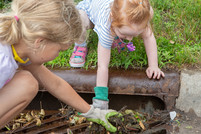 |
|
3. Practice sustainable transportation: Explore your neighborhood and discover what you can walk or bike to.
4. Use sustainable landscaping: Incorporate native plants into your garden to provide food and habitat for pollinators and design ways to keep water on your yard by installing rain barrels, designing a rain garden, or redirecting downspouts.
|
|
 |
|
5. Reduce food waste: Learn strategies to reduce food waste at Save the Food, such as improving your meal planning, storing food to make it last, and keeping track of perishable items and using them up before they spoil
6. Start backyard composting: Put your fruit and vegetable scraps and yard waste to better use with backyard composting. The end product is nutrient-rich compost that you can add to your yard or garden.
|
|
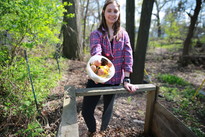 |
|
7. Start some low-waste habits: Replace disposable items you commonly use with reusables, be a thoughtful consumer by only buying what you need and buying high-quality items that are meant to last, and extend the life of your items by maintaining or repairing them.
8. Read a book about the environment: Read a book on climate change or the environment. See recommendations from the Earth Day Network here and here.
|
|
 |
A lot has happened in the past 50 years, including the development of modern waste management and recycling programs, a focus on protecting and restoring our natural resources, the emergence of new threats to our ecosystems, a growing recognition of the need to prevent waste in the first place, and an increased awareness of the role we all play in protecting the environment.
 Watch our video: Earth Day 2020 - Celebrating 50 years of environmental protection in Hennepin County
1970s
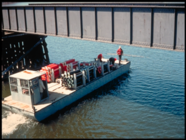
The environmental department in Hennepin County was formed in 1970. The initial focus for this new department was on lake improvement related to water quality concerns in Lake Minnetonka and conducting agricultural inspections.
Within a few years, the department had expanded to focus on tree waste disposal related to the devastation caused by Dutch Elm Disease, leaf and yard waste composting, and solid and hazardous waste inspections and planning.
|
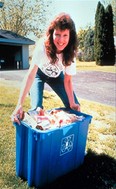
In the mid-1970s, counties were given responsibility for local solid waste management, and Hennepin County adopted its solid waste ordinance (ordinance 2) that banned open dumps and established standards, permitting, and licensing for solid waste facilities. Concerns over pollution from landfills led to the emergence of regulations for hazardous waste disposal and groundwater protection.
The first pilot curbside recycling programs in Hennepin County started in Minneapolis and St. Louis Park in the 1970s.
|
1980s
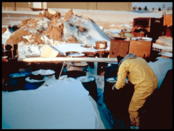
In the 1980s, concern over mismanagement and pollution from hazardous waste by both businesses and residents grew. Hennepin County adopted a hazardous waste ordinance (ordinance 7) and started licensing, inspecting, and, if necessary, conducting enforcement for businesses that generate hazardous waste.
|

The county also began holding community collection events for residents could drop-off their hazardous waste.
The waste management hierarchy that guides our priorities today was established by the Minnesota Waste Management Act in 1980. The county’s recycling ordinance (ordinance 13) was adopted in 1986, and curbside recycling became available throughout the county in the late 1980s.
|

The Hennepin Energy Recovery Center, the county’s waste-to-energy facility, began operating in 1989.This facility helps reduce landfilling of waste.
The Hennepin Conservation District began working with landowners to establish conservation easements, which permanently protect natural resources on private property. The district also expanded monitoring of lakes, streams, and wells.
|
1990s

In 1996, the county developed the Environmental Assessment Team to coordinate the evaluation and cleanup of contamination on property the county owns or has an interest in, including tax-forfeited properties, county facilities, and road rights-of-way.
The state legislature established the county’s Environmental Response Fund in 1997. The fund uses a mortgage registry and deed tax from the sale of properties in the county to fund the cleanup of contaminated sites. Some of the funding was used to clean up a priority former federal superfund site – National Lead in St. Louis Park. The county started awarding grants for environmental assessment, soil and groundwater cleanup, and asbestos and lead paint abatement on properties throughout the county in 2001.
|

After Minnesota’s Wetland Conservation Act was passed in 1991, the county started enforcement to protect these critical but long-abused ecosystems.
Water quality monitoring programs that engaged students and volunteers to collect data started in the mid-1990s. The conservation district also started the agricultural best management practices program and the well-sealing cost-share program.
|
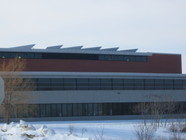
Recognizing the importance of energy efficiency in building design and operation, the county initiated a collaborative effort to create the Minnesota Sustainable Design Guide in 1996. In 1997, the county’s Public Works Facility in Medina became the first building in Minnesota to use the sustainable building standards. The guide was a precursor to the current Minnesota Sustainable Building Guidelines (B3 guidelines) that are now widely used by state and local agencies to meet sustainability goals for new building design and building renovations.
|

Hazardous waste collection events for residents had become so popular that the sites were often overrun, so the county opened permanent drop-off facilities in Bloomington and Brooklyn Park in the early 1990s.
The county started waste prevention programs, and recycling programs expanded to include plastic bottles and recycling at multi-unit buildings. The last landfill in Hennepin County closed in 1993.
|
2000s
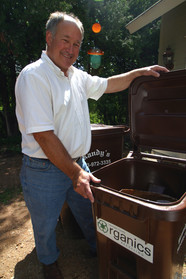
With recycling programs well-established, the county started to focus in on the most prevalent material in our trash – food and other organic waste – in the early 2000s. The county started selling compost bins to residents, a citywide curbside organics recycling pilot launched in Wayzata in 2003, and 21 schools in Hopkins, Minnetonka, and St. Louis Park started programs.
To support reuse retailers and encourage people to buy used good, the Choose to Reuse campaign launched in 2003. To help further expand recycling, the county started grant programs to support recycling improvements in schools, businesses, multifamily buildings, and public spaces.
|
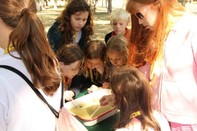
Many environmental education efforts launched in the 2000s, including environmental education grants for community and youth groups, activity guides and learning trunks, and partnerships to offer environmental education programs.
Sustainable landscaping practices became a focus with the development of demonstration ecoyards and educational seminars.
|

Management of electronic waste became a key concern with the state banning electronics containing cathode ray tubes (CRTs) from the garbage because they contain lead and a requirement that electronics manufacturers reimburse counties for the collection and proper disposal of electronics.
|
2010s
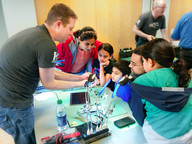
Waste prevention efforts expanded in 2010s with the start of the Master Recycler/Composter program, Fix-It Clinics, and Zero Waste Challenge. Recently, an effort started to encourage the salvage, reuse, and recycling of building materials.
Organics recycling programs continued to develop, with the largest curbside organics recycling program in the county in Minneapolis launching in 2015. Various businesses and nonprofit organizations and many schools also started organics recycling.
|

To accelerate the development of organics recycling programs, the county revised the recycling ordinance (ordinance 13) in 2018 to require businesses that generate high volumes of food waste to start recycling food waste and cities to offer organics recycling service to their residents.
|

Conservation services and authorities were transferred to the Hennepin County Board from the separate Hennepin Conservation District Board in 2013. This created more transparency and support for the natural resources work in the county. Hennepin County created its first natural resources strategic plan in 2016, setting the course for natural resources protection in the county.
The Hennepin County forestry unit was formed to address the threat of emerald ash borer and enhance the county’s tree canopy. The county’s forestry unit has been proactively planting a wide variety of tree species to replace ash trees as well as treating and preserving mature, high-value ash trees. Foresters established a gravel-bed nursery to give the county access to hardy, diverse and cost-effective trees for use on county projects and properties.
|
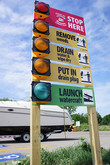
With funding from the state starting in 2014, the county has supported projects to prevent the spread of aquatic invasive species, including redesigning boat accesses, expanding inspections, training volunteers, conducting education and raising awareness, and addressing pathways of introduction.
Hennepin County landscaping staff developed Sustainable Landscape Guidelines in 2015 to promote the installation of landscapes on county property that are fiscally and environmentally responsible.
|
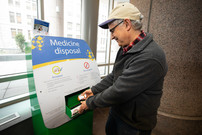
To help address the growing concern over prescription drug abuse, collection events for unwanted medicines were first offered in 2010. This led to the development of medicine drop boxes, and there are now more than 30 drop boxes available throughout the county.
Recycling programs switched to single stream so that all recycling is collected together, and efforts to reach out to multi-unit buildings were reinvigorated. Material accepted expanded to include plastic cups and containers and cartons. The state and the county passed new recycling requirements for businesses.
|

Hennepin County’s Conservation Easement Program Guidelines were adopted in 2016, establishing evaluation procedures for the preservation of natural areas and setting the county up to secure additional funding for this work. Work to protect that last, best remaining natural areas in the county expanded with funding from the Lessard-Sams Outdoor Heritage Fund. The county is focusing on establishing conservation easements and conducting restoration projects on protected properties.
|
2020 and beyond
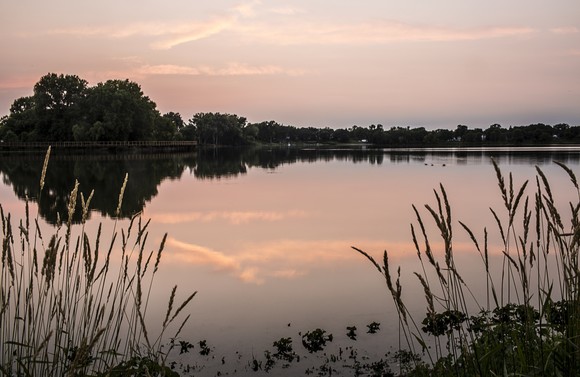
As we look to the future of environmental protection in Hennepin County, our core services developed over the past 50 years to reduce and responsibly manage waste, protect land and water, clean up contaminated sites, and promote environmental stewardship will continue.
We are also focusing on making progress on our current priorities:
- Taking action on climate change
- Expanding organics recycling and reducing food waste
- Striving for zero waste
- Enhancing the tree canopy
- Protecting and improving water quality
- Addressing invasive species
- Protecting the last, best remaining natural areas and restoring habitat
- Promoting environmental stewardship
|